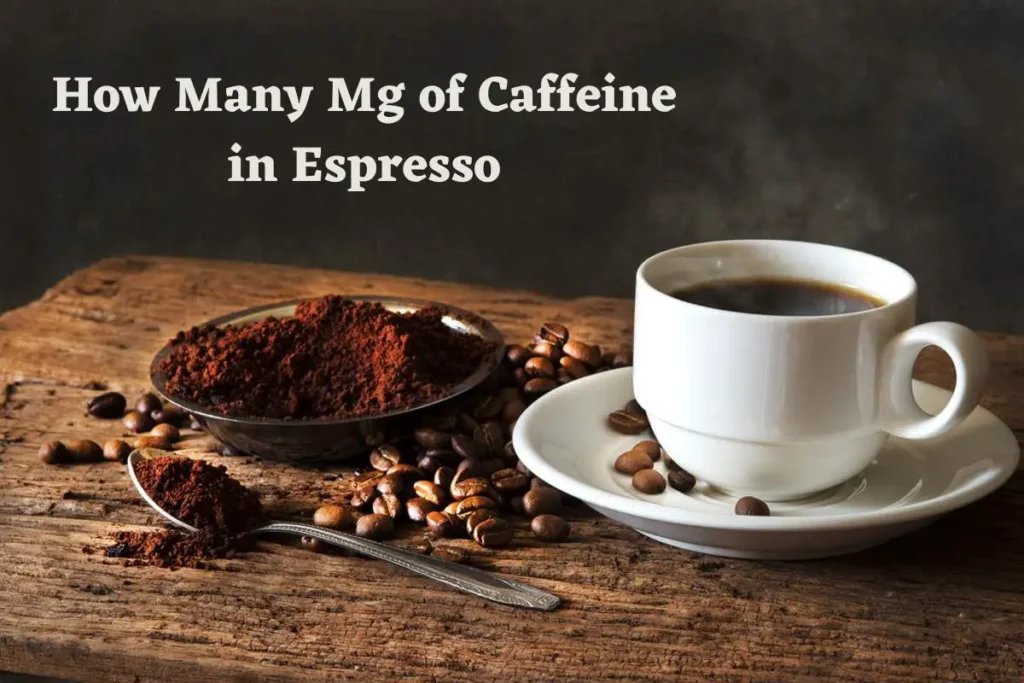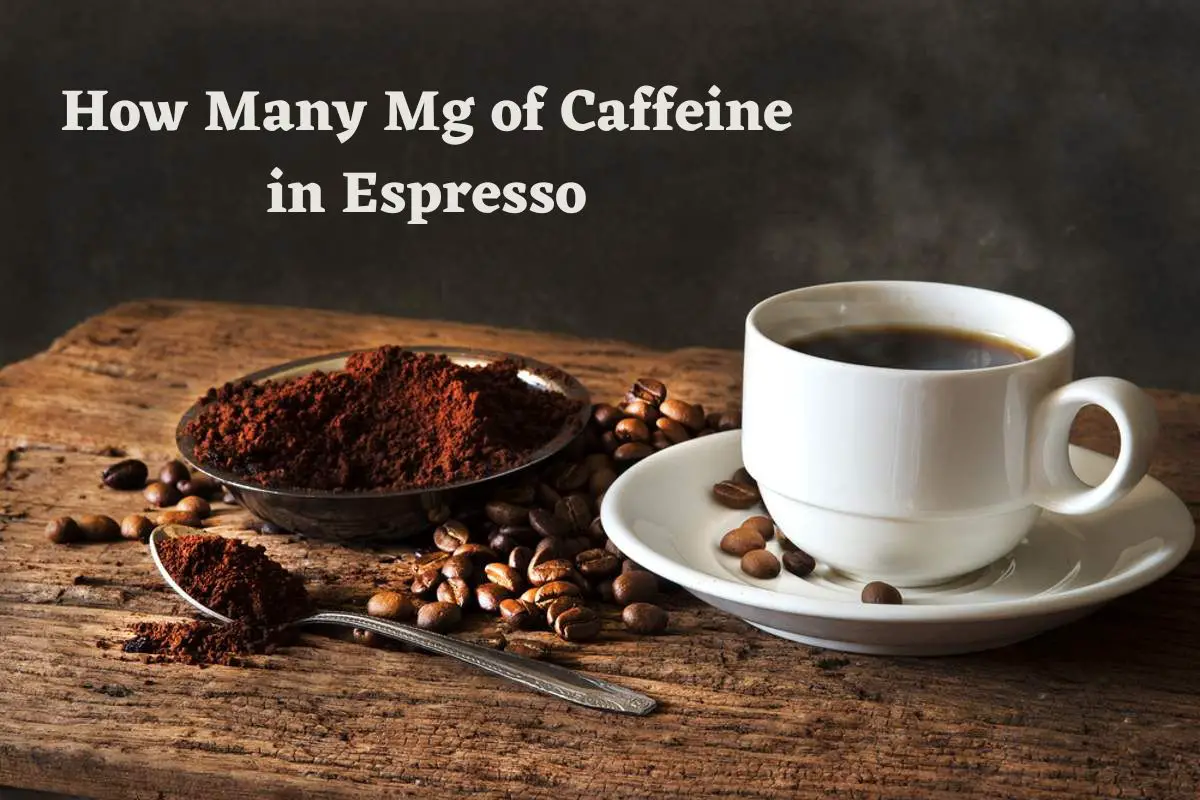
How Many mg Are in a Shot of Espresso? Unpacking Caffeine Content and Its Impact
For coffee aficionados and casual drinkers alike, the question of caffeine content is a perennial one. And when it comes to espresso, the concentration and preparation methods make the answer particularly nuanced. So, just how many milligrams (mg) of caffeine are in a shot of espresso? The answer, as with many things in the world of coffee, is complex and depends on several variables. This article delves into the specifics, exploring the caffeine levels in a single shot of espresso, the factors that influence them, and the effects this potent beverage has on the body.
Understanding the Basics: What is Espresso?
Before we can dissect the caffeine content, it’s essential to understand what espresso actually is. Espresso is a coffee-brewing method where hot water is forced through finely-ground coffee beans under high pressure. This process results in a concentrated coffee brew, characterized by its rich flavor and a layer of crema on top. The preparation method differentiates espresso from other coffee drinks, such as drip coffee or French press, which use different brewing techniques and result in varying caffeine levels.
The Average Caffeine Content in a Shot of Espresso
Generally speaking, a single shot of espresso (typically about 1 ounce or 30 milliliters) contains around 63 mg of caffeine. However, this is just an average. The actual amount can fluctuate significantly. This makes knowing the exact how many mg are in a shot of espresso in your daily brew a bit tricky. The range is broad enough that it can easily impact your daily caffeine intake.
Factors Influencing Caffeine Levels
Several factors can influence the caffeine content in a shot of espresso. These include:
- Type of Coffee Bean: Different coffee bean varieties, such as Arabica and Robusta, have varying caffeine levels. Robusta beans generally contain significantly more caffeine than Arabica beans.
- Roast Level: The roasting process can impact caffeine levels. While there’s some debate, darker roasts often have slightly less caffeine by weight than lighter roasts because some caffeine is lost during the roasting process. However, darker roasts may taste more bitter, leading to a perception of higher caffeine.
- Grind Size: The grind size affects extraction. Finer grinds can lead to higher caffeine extraction if the other variables are consistent.
- Brewing Time: The longer the brewing time, the more caffeine is extracted. Espresso machines are designed to extract in a short timeframe, typically 20-30 seconds.
- Water Temperature and Pressure: Optimal water temperature and pressure are critical for proper extraction. Deviations from the ideal can alter caffeine extraction rates.
- Coffee-to-Water Ratio: The ratio of coffee grounds to water influences the strength and caffeine content. More coffee grounds generally mean more caffeine.
Understanding these factors helps explain why the answer to “how many mg are in a shot of espresso” isn’t always a simple number.
Comparing Espresso to Other Coffee Drinks
To put the caffeine content of espresso in perspective, let’s compare it to other popular coffee drinks:
- Drip Coffee: An 8-ounce cup of drip coffee typically contains between 95 and 200 mg of caffeine.
- Brewed Coffee (French Press, Pour Over): Depending on the brewing method and coffee-to-water ratio, these can range from 80 to 120 mg per 8-ounce cup.
- Cold Brew: Cold brew coffee is often more concentrated and can contain 150-250 mg of caffeine per 8-ounce serving.
- Energy Drinks: Energy drinks vary widely, but can contain anywhere from 80 to 300 mg of caffeine or more, often in combination with other stimulants.
Espresso, while concentrated in flavor, is typically consumed in smaller servings than drip coffee. However, it still packs a significant caffeine punch, making it a popular choice for a quick energy boost.
The Impact of Caffeine on the Body
Caffeine is a stimulant that affects the central nervous system. When you consume caffeine, it blocks adenosine, a neurotransmitter that promotes relaxation and sleepiness. This is why coffee, including the how many mg are in a shot of espresso variety, can make you feel more alert and energized.
Some potential benefits of caffeine consumption include:
- Increased Alertness and Focus: Caffeine can improve cognitive function and enhance focus.
- Improved Physical Performance: Caffeine can boost physical endurance and reduce perceived exertion during exercise.
- Potential Health Benefits: Some studies suggest that moderate coffee consumption may be associated with a reduced risk of certain diseases, such as Parkinson’s disease and type 2 diabetes.
However, caffeine can also have side effects, especially if consumed in high doses or if you are sensitive to it. These can include:
- Anxiety and Nervousness: Caffeine can exacerbate feelings of anxiety in some individuals.
- Insomnia: Consuming caffeine too close to bedtime can interfere with sleep.
- Digestive Issues: Caffeine can stimulate the digestive system, leading to stomach upset or diarrhea in some people.
- Increased Heart Rate: In sensitive individuals, caffeine can cause a temporary increase in heart rate and blood pressure.
It’s crucial to monitor your caffeine intake and be aware of how your body responds. The caffeine in a shot of espresso, while impactful, might be the perfect amount for some, while too much for others.
Caffeine Sensitivity and Tolerance
Caffeine sensitivity varies greatly from person to person. Factors like genetics, body weight, and regular caffeine consumption all play a role. People who are not used to caffeine may feel its effects more strongly than those who consume it regularly. Developing a tolerance to caffeine is common, meaning you may need more caffeine to achieve the same effects over time. This makes knowing how many mg are in a shot of espresso and how your body reacts a personal process.
Tips for Managing Caffeine Intake
If you’re a coffee lover, here are some tips for managing your caffeine intake:
- Be Mindful of Serving Sizes: Pay attention to the size of your espresso drinks. A double shot will, obviously, contain more caffeine than a single shot.
- Read Labels: If you’re buying pre-made coffee drinks or energy drinks, always check the label for caffeine content.
- Limit Consumption Before Bed: Avoid caffeine several hours before bedtime to minimize sleep disturbances.
- Listen to Your Body: Pay attention to how caffeine affects you. If you experience negative side effects, reduce your intake.
- Consider Decaf: If you enjoy the taste of coffee but want to reduce your caffeine intake, consider drinking decaffeinated coffee or espresso.
The Future of Caffeine Research
Research into the effects of caffeine is ongoing. Scientists are continually exploring the benefits and risks associated with caffeine consumption. Future studies may provide more specific information about the optimal caffeine intake for different individuals and populations. The answer to how many mg are in a shot of espresso might become even more personalized as research continues.
Conclusion: Navigating the World of Espresso Caffeine
So, how many mg are in a shot of espresso? While the average is around 63 mg, the actual amount can vary. Understanding the factors that influence caffeine levels, as well as your personal sensitivity and tolerance, will help you make informed choices about your coffee consumption. Espresso, with its concentrated caffeine, offers a quick and potent energy boost. Enjoy it responsibly, and be mindful of how it affects your body. By understanding the details of how many mg are in a shot of espresso, you can better appreciate the role this iconic beverage plays in your daily life.
[See also: Related Article Titles]


